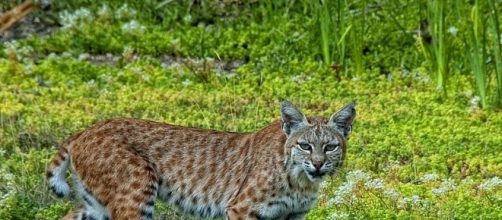Bobcats used to, once, be shy creatures but with their numbers increasing, they have become more human-friendly and have joined other wildlife species like foxes, coyotes, and even mountain lions to gradually invade human habitats. Bobcats used to go Hunting only after dusk but now they can be seen in the day also and one of the driving forces appears to be an easy access to food.
These animals have been spotted in different localities of New Hampshire, Iowa and even in the outskirts of Los Angeles and they usually move near backyard bird feeders in search of their next meal.
The present scenario
Daily Mail UK reports that wildlife ecologist John Litvaitis of University of New Hampshire has been keeping a tab on bobcats (lynx rufus) for over four decades. He has photographed them in various moods like stalking a chipmunk or gobbling up birds. His observation is that bobcats have adapted themselves to the changing scenario of the modern age.
In the 1970s, there was no protection for bobcats in many of the states and bounties were common but that has changed and today there are restrictions on their hunting and trapping. They are quite large and reap the benefits of warmer Northeast winters that provide them a chance to hunt for the white-tailed deer.
Incidentally, their present population is in the region of 3.6-million as per 2010 census published in the Journal of Fish and Wildlife Management – this is a threefold increase over the figures of the 1980s.
Their survival is a reflection of its ability to eat almost anything and adjust to any environment as diverse as from swamps to suburban parks.
The secret of survival
Bobcats are innovative and when the availability of cottontail rabbits declined in New Hampshire, they switched over to wild turkeys and squirrels. Nathan Roberts, a wildlife research scientist at the Wisconsin Department of Natural Resources, was associated with the survey and he had attached GPS collars to 60 of them in the past three years in Wisconsin. He observed one particular bobcat in a small town that went from one bird feeder to another in search of food.
There are complaints of bobcats preying on domestic chickens and the public wants them to be relocated.
Instances of road-killed bobcats is also a matter of concern and some of the states are toying with the idea of authorizing hunting and trapping to keep the population in check. However, here also there are obstacles because in New Hampshire there was a proposal to offer permits annually but it was withdrawn. The reason was that Canada lynx could get caught in the bobcat traps and the Canada Lynx falls into the category of the Endangered Species Act.


